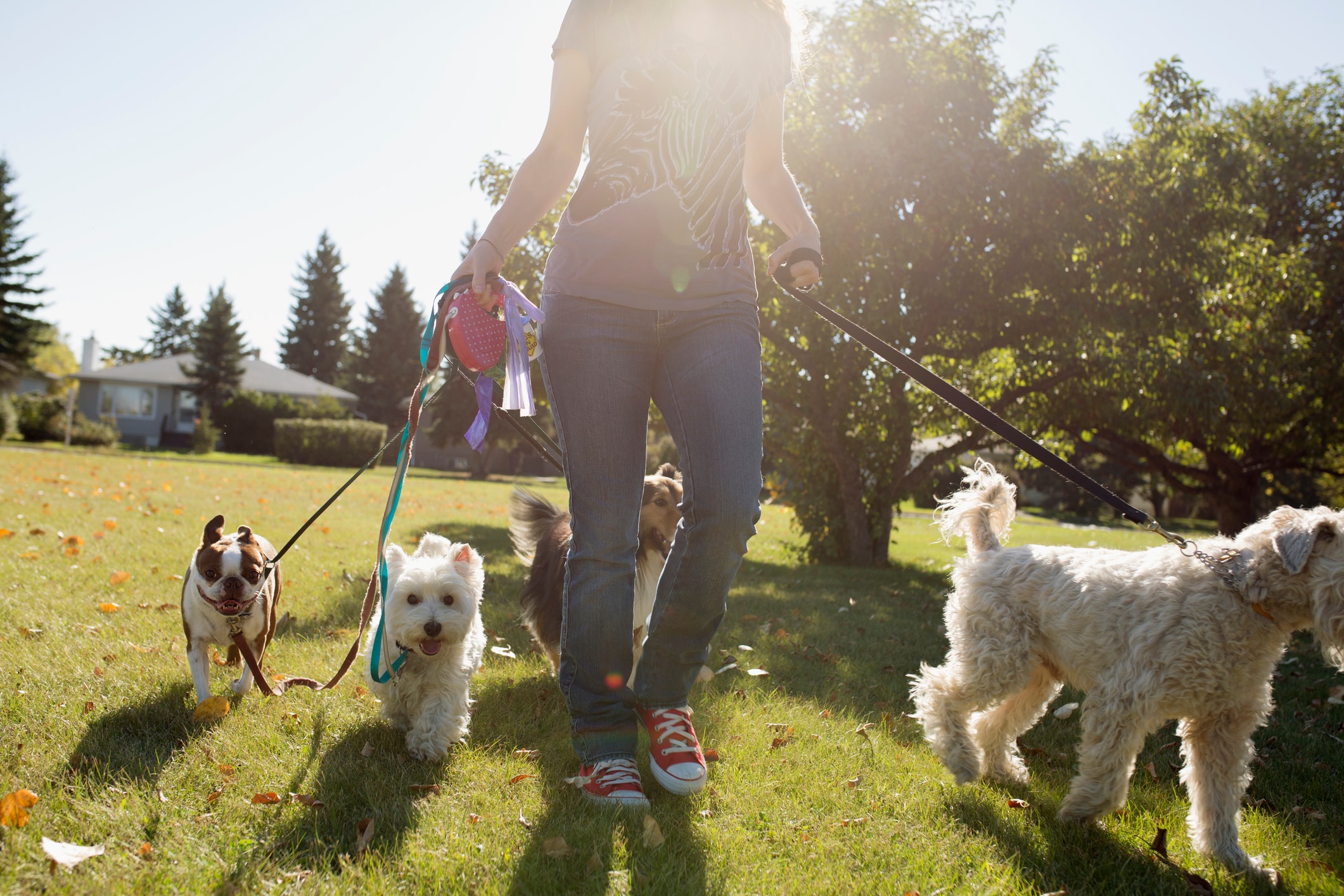Every dog owner hears the rabies horror stories. Fortunately, rabies is not a common problem for pet dogs these days, but it still exists in wildlife, and your dog still risks infection if she is bitten by an animal that’s infected. If your dog isn’t up to date on rabies vaccinations, you should be extra cautious for signs of rabies in dogs. Even if your dog has current rabies tags, you might come across a dog who doesn’t. If you use a dog walker, make sure they check that all the dogs they walk have up-to-date vaccinations so you don’t risk exposing your dog.
Most cases of rabies these days are found in wild–not domestic–animals, according to the Centers for Disease Control and Prevention (CDC). One of the biggest risk factors for rabies in humans and dogs are bats, says Dr. Erin Redeker-Goelitz of Hill Veterinary Clinic, speaking from her experience as a veterinarian in suburban Chicago. Last year, she said clients of hers had a bat in their home that was carrying rabies. Fortunately, the dog was immunized against rabies, and the bat didn’t bite the homeowners.
Immunization is key to keeping your dog safe from rabies. Modern-day prevention methods — that is, vaccinations — have proven to be nearly 100 percent successful. Dr. Terry Pitts of Pitts Veterinary Hospital in Lincoln, Nebraska, says in his four decades of veterinary practice, he has never seen a rabid dog, adding that nearly all states require up-to-date rabies immunizations and rabies tags. But in case your dog doesn’t have up-to-date tags or you encounter an unfamiliar dog, we’ve put together all the information you need to know.
Here are the signs of rabies in dogs:
- Changes in Behavior
Look for aggression, viciousness, irritability, excitability, nervousness and anxiety, says Redeker-Goelitz. A rabid dog may show unprovoked aggressive behavior or even become overly friendly.
- Abnormal Behavior
Watch for behavior that seems neurologically based — for example, if your dog is abnormally licking, biting or wandering, seems disoriented, staggers or stumbles, is having seizures, seems to be paralyzed or has a sudden fear of water.
- Physical Changes
Is your dog drooling too much, or has the sound of his bark changed? Dogs with advanced rabies may foam at the mouth because of the way the virus affects salivary glands. Dogs with a “furious” type of rabies, according to Pitts, may attack. “Mentally, they’re not right,” he says.
These signs, Redeker-Goelitz adds, can present two weeks to several months after exposure, which commonly happens when a dog is bitten by another animal. If you suspect your dog has been exposed, be sure to see your veterinarian immediately. The rabies virus, she says, is always fatal, usually within seven to 10 days of clinical signs. Suspected animals, she says, should be confined and quarantined.
To help reduce the chance of your dog (or anyone in your family) getting rabies, if you ever have a bat in your home, call your animal control officer immediately so that the bat can be trapped and tested for rabies. Rabid bats, according to the nonprofit Global Alliance for Rabies Control, often show abnormal behavior, such as crawling on the ground.
In rare cases, humans and animals can be infected by inhaling bat saliva that’s in the air. For example, this might occur in a cave that has a large bat population. In addition, be sure to keep your dog away from any other wildlife exhibiting some of the above behaviors.
If you suspect you have or are near a rabid dog, Pitts emphasizes you should do everything in your power to avoid being bitten and call your animal control and veterinarian immediately. For a definitive diagnosis of the rabies virus, a dog would have to be euthanized and a brain tissue sample tested.
The best way to prevent rabies? Vaccinate your dog!
And read about Preparing for a Pet Care Emergency.
Erin Chan Ding is a freelance journalist based in the Chicago area who writes about news, features, profiles, parenting, travel and pets.





